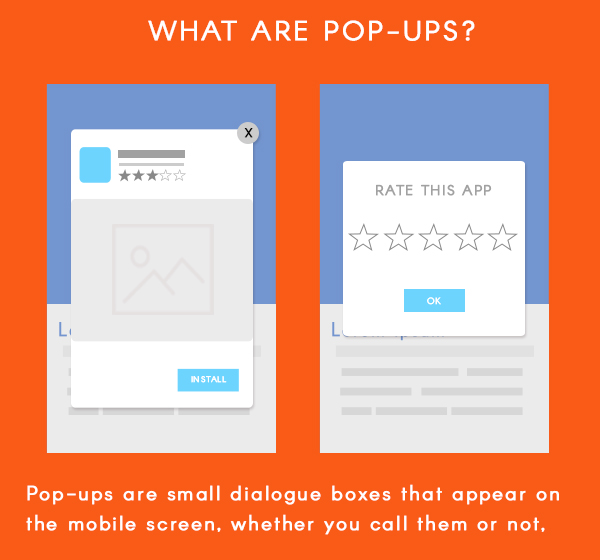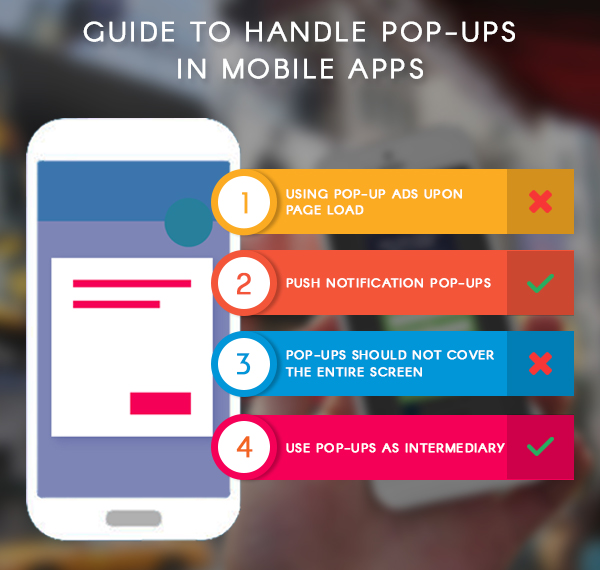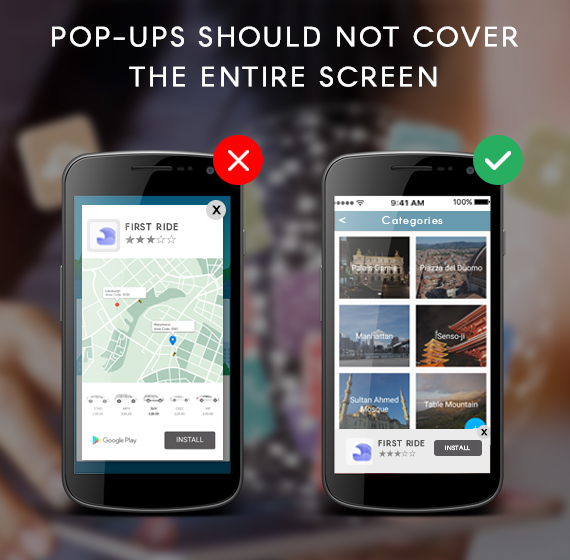The ultimate guide to handle pop ups in mobile apps
Advertising and promotion on mobiles can take different formats, some of which are very effective. Pop-up ads worked well for many industries for years, and they are difficult to be ignored. As the mobile users continue to rise, it makes sense to prioritize mobile experience.
There is a strong focus on user experience in the recent years. Pop-ups have become a terrible thing on smartphones. Whether it is web browser or a free app, the pop-ups that jump out every minute are killing the user experience. Mobile app developers have to take care of the pop-ups and follow some guidelines to deal with this nagging problem.
Professional mobile app development companies have proven ways of creating mobile apps that can engage your customers without an interruption. Being a reputed mobile app development company in India, we have seen our piece of mistakes, when it comes to pop-ups in mobile apps.
Here are the best guidelines to use pop-ups in mobile apps. Before we go into detail, let’s see what pop-ups are and their importance.
What are pop-ups?
Pop-ups are nothing but the small dialogue boxes that appear on the mobile screen. Whether you call them or not, they appear on the screen. Thought they can be considered as small element, they play an important role in communicating with the user. They can help users as they progress through the app journey.
On the contrary, pop-ups can even frustrate the users by popping-up frequently. However, pop-ups in mobile apps can be handled easily by following some rules and guidelines.
If you wish to continue using mobile pop-ups are as a part of your marketing strategy, without compromising user experience — following the guide below!
Guide to handle pop-ups in mobile apps
The main objective of any mobile app should be to provide best possible user experience. Pop-ups ads on your mobile app can have a negative effect on the conversions, if not handled properly. Improve the pop-ups in your mobile app with right tools and below guidelines.
a.) Avoid using pop-up ads upon page load
App developers often make the mistake of using pop-ups upon page load. There are different types of events where pop-up ads can be used. In some mobile apps, pop-up ads arrive as soon as the mobile app is opened. This is highly discouraging from the view of Google’s algorithm as well as user experience. According to sources, 75% of users are likely to leave the mobile app — if they find it has too many pop-ups.
To enhance user experience, app developers should have the pop-up load after some time. This indicates an elevated level of user engagement. By handling pop-ups this way, the users are more likely to use your app for long period.
b.) Push notification pop-ups
Push notification is one of the valuable tools that help you engage and re-engage with your users. For many, push notificationsare the primary medium to interact with an app. Users access most of the information they need via push notification. Earning and maintaining the right to send push notifications should be an important aspect of user retention strategy.
If the users tap ‘Do Not Allow’ option, it means your game is over. The pop-up should be in such a way that the user taps on ‘OK’, when asked. Create your own pop-up that allows you to access how willing are your users are to accept push notifications. Ask relevant permissions that are convincing and use the context to explain the text in the permission clearly.
c.) Use pop-ups as intermediary
Many affiliates use pop-ups to promote an affiliate offer. The best way to use pop-ups is to encourage a visitor to subscribe your email list or download premium content. You can promote one or more affiliate products inside the premium content or newsletter, instead of mobile app.
Pop-ups help in increasing the email subscriptions, boosting opt-in rate for entrepreneurs and converting better than statistic forms. You can keep the user within your sales funnel and promote additional offers over long term.
d.) Pop-ups should not cover the entire screen
This is perhaps the most important tip to handle pop-ups in mobile apps. According to Google algorithm — if the pop-up ad uses a reasonable amount of screen space, the app will not be penalized. A good example of pop-up in mobile app would be the one that pops up at the top quarter or bottom quarter of the screen.
By doing this way, the main content of the app is easily visible and scrolled through, providing good visibility to the pop-up too.
e.) Make sure that the pop-up is interesting
Pop-ups are not only meant to provide information or guide through certain steps, but should be beneficial to the users. For example – pop-ups like – Refer a Friend, Rate the App etc will benefit the user as they will receive something in return.
Most of the users refer friends or rate the app as a task. However, if you give the user something in return before they ask, you can attract many users. This could be in the form of a freebie for using your app. A/B testing is the best way to tell if the pop-up is interesting or not. This will give you statistical information as where you should place the pop-up. Take time to analyze the pop-up and reap the benefits of active users.
Pop-ups are the best ways for developers to communicate with their users. When it comes to in-app errors, app developers should not confuse the users with pop-ups. If a technical error has occurred within the app, app developers can use the pop-up to reach out to users and inform them that they are working to resolve the issue. This hints the users that you are working on the issue to enhance user experience.
App developers have the power to improve pop-ups easily, which boosts engagement and conversions. Monitor the performance of pop-ups with the help of mobile app analytics platform. Although pop-ups have a bad rap, they can change the game of your app – if used thoughtfully.
Still have your concerns?
Your concerns are legit, and we know how to deal with them. Hook us up for a discussion, no strings attached, and we will show how we can add value to your operations!


